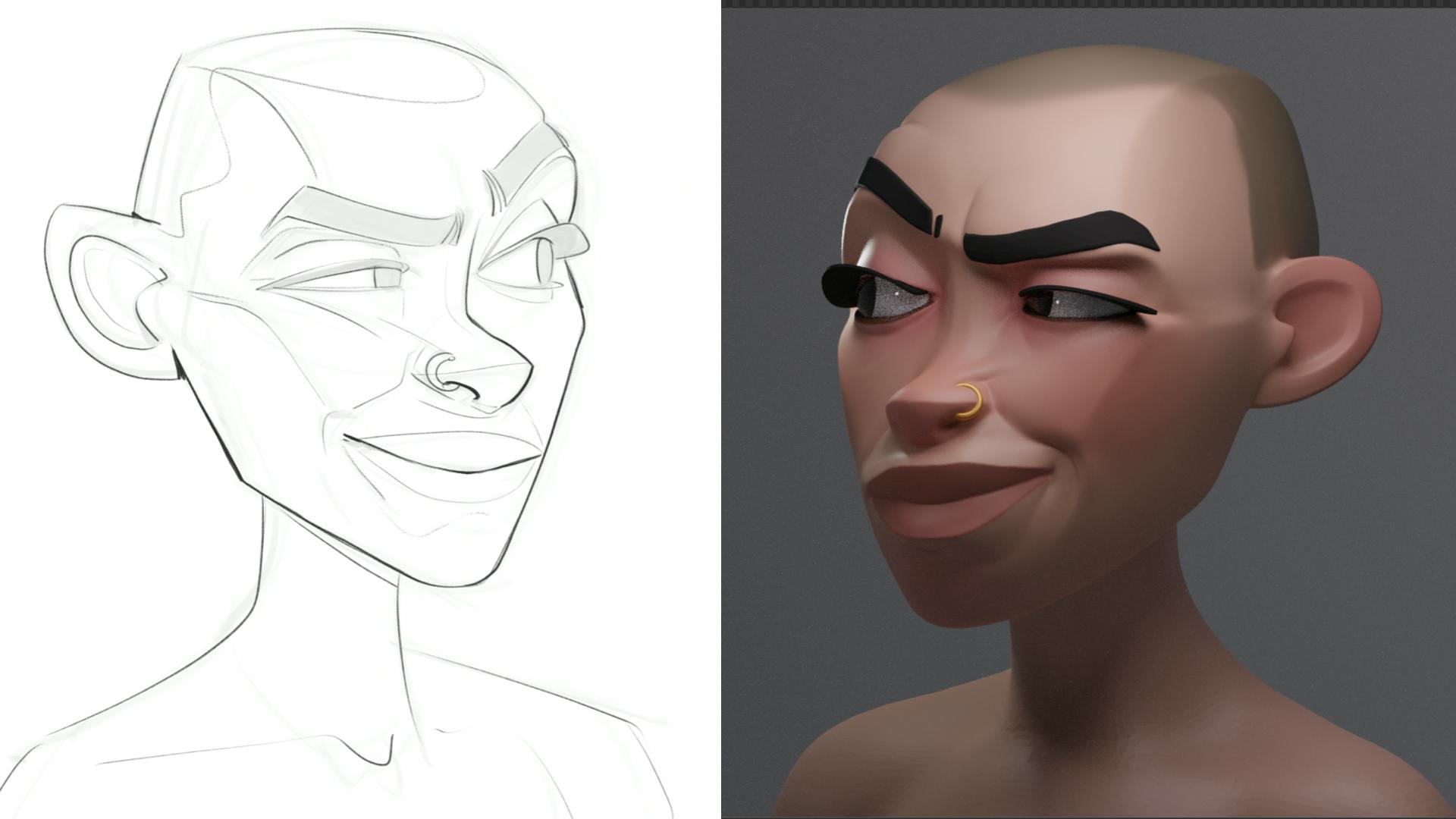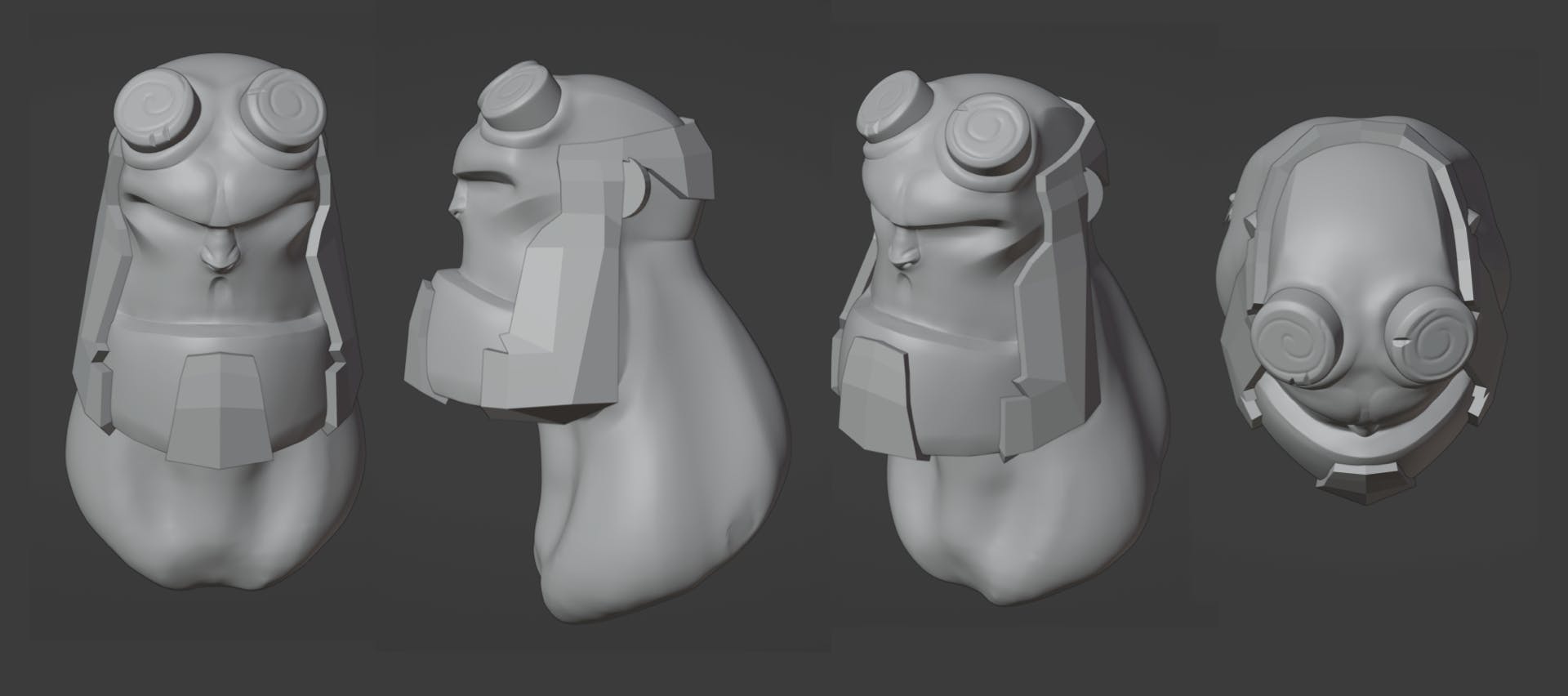
Why should you learn 3D as a 2D artist?
It clarifies a lot of stuff
It was one of the best things I did to accelerate my understanding of 3D forms, particularly when trying to wrap my head around complex forms like the head.

Propell your understanding of Form and Space
By learning 3D sculpting, I gained a more intuitive and hands-on understanding of form and space. This improved my ability to represent 3D objects and environments in my 2D artwork
Versatility in Different Mediums
I've used many digital tools such as Photoshop & Procreate. But by delving into 3D land , I was able to create 3D models and assets that could be imported into these programs and used as reference or as a starting point for my 2D artwork.
Improved Problem-Solving Skills
3D sculpting required me to think spatially and solve problems in three dimensions. This improved my problem-solving skills and helped me think more creatively and critically.
Great artists and animators use 'Maquettes'
Disney animators often use maquettes, or small scale models, to help them keep their characters "on model" and consistent in their appearance and movement.
These maquettes are typically sculpted by skilled artists and are used as reference for the animators as they create their drawings and animations.
Some notable sculptors for Disney include:
-
Blaine Gibson, who sculpted maquettes for characters such as Mickey Mouse, Donald Duck, and Goofy.
-
Marc Davis, who sculpted maquettes for characters such as Cruella De Vil and Maleficent.
-
Ruben Procopio: Ruben Procopio has worked as a sculptor on several Disney movies, including "Moana," "Zootopia," and "Ralph Breaks the Internet." He has also worked on other animated films such as "The Incredibles" and "Up."
-
Dan Cervin: Dan Cervin has worked as a sculptor on several Disney movies, including "Frozen," "Big Hero 6," and "Moana." He has also worked on other animated films such as "The Lion King" and "Beauty and the Beast."
-
Eric Semento: Eric Semento has worked as a sculptor on several Disney movies, including "Moana," "Zootopia," and "Ralph Breaks the Internet." He has also worked on other animated films such as "The Incredibles" and "Up."
-
Paul Felix: Paul Felix has worked as a sculptor on several Disney movies, including "Frozen," "Big Hero 6," and "Moana." He has also worked on other animated films such as "The Lion King" and "Beauty and the Beast."
-
Ennio Torresan: Ennio Torresan has worked as a sculptor on several Disney movies, including "Moana," "Zootopia," and "Ralph Breaks the Internet." He has also worked on other animated films such as "The Incredibles" and "Up."
Maquettes can be especially helpful in creating realistic and expressive character movements, as they allow animators to experiment with different poses and see how the character's features and proportions change in three dimensions. By using maquettes, Disney animators are able to create characters that are consistently "on model" and maintain their integrity across different films and media.
Links to examples of people using maquettes:
Aaron Blaise beautiful studio tour: Maquette @4:00 "every character designer got one to use as reference" https://youtu.be/NCUg8NNiIiM